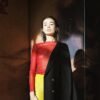Pushing the Boundaries: The Fusion of Art and Fashion Through Experimental Designs
The Evolution of Art and Fashion Collaboration
The historical relationship between art and fashion serves as a fascinating lens through which one can witness the transformation of cultural conventions. This collaboration dates back to the emergence of haute couture in the 19th century, where pioneering designers such as Charles Frederick Worth began to infuse artistic principles into their creations. By treating garments as art forms, these designers laid the groundwork for future collaborations that would push the boundaries of both disciplines.
In the following decades, the relationship evolved significantly. The 20th century saw the rise of influential movements like Surrealism, which profoundly impacted fashion design. Designers like Elsa Schiaparelli embraced avant-garde aesthetics, orchestrating creative dialogues with artists such as Salvador Dalí. This trend of adopting visual art into fashion continued through movements such as Pop Art and Minimalism, where artists and fashion designers alike began to manipulate traditional media to generate commentary on consumer culture and identity.
As the century progressed, the proliferation of technology and digital art further transformed the landscape. The introduction of new materials and techniques allowed designers to experiment with form and function, leading to dynamic creations that reflect contemporary society’s complexities. Notably, digital fashion has emerged as a significant domain, challenging the notion of physical garments and redefining the artist-designer relationship through innovation.
In recent years, collaborations between well-known artists and fashion houses have become commonplace, generating exciting dialogue within both industries. These partnerships strive not only for aesthetic excellence but also for societal change, addressing issues such as sustainability and inclusivity in their narratives. This ongoing evolution signifies a profound synergy between art and fashion, setting the stage for the minimalistic yet experimental designs that characterize the current cultural moment.
Experimental Design as a Means of Expression
In the contemporary landscape of art and fashion, experimental design has emerged as a powerful vehicle for self-expression and identity exploration. Various collectives are spearheading innovative approaches that blend artistic vision with fashion functionality, pushing the boundaries of traditional aesthetics. This convergence fosters a dialogue that challenges norms, engages audiences, and encourages a reevaluation of the roles that both art and fashion play in society.
Notable examples include the collaborative works of designers like Maison Margiela and artists such as Björk, who fuse fashion with provocative artistic statements. Through avant-garde collections, these collectives utilize unconventional materials, often subverting their commonplace uses. For instance, recycled materials become stunning garments, prompting a broader conversation about sustainability in fashion. The thematic undertones of such designs often address pressing social issues, inviting viewers to reflect on their interpretations and the implications of consumption culture.
Additionally, initiatives like those from the collective known as Studio Drift explore the intersection of technology and craftsmanship in fashion. By integrating kinetic art with wearable pieces, they challenge perceptions of permanence in clothing, suggesting a fluid relationship between the wearer and the garment. Such innovative concepts not only enrich the fashion landscape but also provoke emotions and inspire introspection among their audiences.
The impact of these experimental designs transcends conventional boundaries, influencing contemporary trends and setting new standards within the fashion industry. As these collectives gain prominence, they inspire other designers to adopt similar experimental methodologies, further entrenching the belief that fashion can serve as an expressive art form. The reception of such avant-garde designs highlights a growing appreciation for the fusion of art and fashion, marking a critical evolution in how society perceives and interacts with both disciplines. In conclusion, the ongoing experimentation within this realm underscores the transformative power embedded in creative collaboration, heralding a new era of artistic exploration.


